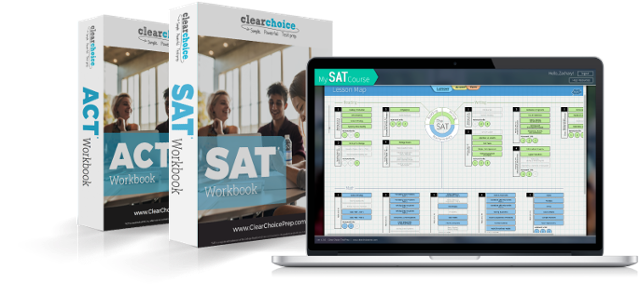How to Interpret the SAT® Score Report
Updated on June 12, 2023
With SAT® score reports now available, there’s no better time to help your clients better understand the information coming their way.
The SAT® is a complex test that generates a lot of useful data for admissions counselors, tutors, parents, and students. It is important to look beyond the total score for opportunities to both celebrate success and target further improvement.
What Did I Get on the SAT®?
The SAT® score report surfaces the Total Score just under the student’s address with the largest font on the page. This number ranges from 400-1600, and represents the combination of Math and Evidence-Based Reading and Writing scores.
If they sat for the optional essay test, the Essay Scores are just to the right of the Total Score. There are scores ranging from 2-8 for Reading, Analysis, and Writing. These scores each come from the combined rubric values of the two essay graders who evaluated their composition. There is no combined essay score.
Directly under these scores are the Section Scores. This is the breakdown of the Total Score into the individual Math and Evidence-Based Reading and Writing scores. These scores will range from 200-800 and are accompanied by percentile and benchmarking data (more on these later).
Do Test Scores, Cross-Test Scores, and Subscores Matter?
Yes! It used to be that the Section Scores and Total Scores were the extent to which the SAT® reported the test taker’s perceived readiness for college-level rigor. The New SAT® has folded in additional data points to help give students and educators a clearer picture of where they stand in several specific areas.
Test Scores range from 10-40, and break down student performance by Reading, Writing and Language, and Math. This allows a test taker to evaluate his or her performances on the Reading Test and the Writing and Language Test separately.
Cross-Test Scores also range from 10-40. They indicate student performance across both halves of the test based on the domains of Analysis in History/Social Studies and Analysis in Science. While history and science don’t have their own devoted sections on the SAT®, they make up the bulk of the nonfiction text used in examples and problems. The Cross-Test Scores help clarify areas of specific strength and/or weakness in these two content areas.
Subscores range from 1-15, and focus on specific skills employed across the entire test:
Command of Evidence
Words in Context
Expression of Ideas
Standard English Conventions
Heart of Algebra
Problem Solving and Data Analysis
Passport to Advanced Math
Paying attention to these lesser-utilized score sets can be the key to tailoring the perfect plan forward if a Total Score or Section Score show some room for improvement.
That said, opting for a comprehensive test-prep solution, like the offerings from Clear Choice Prep, can help students before test day. Test-prep tutors can turn these more specified areas into focal points for practice and growth by identifying potential weaknesses as a part of the preparation process.
How Do My SAT® Scores Compare?
The SAT® Score Report contains two different types of comparison data: benchmarks and percentiles.
Benchmarks are set for both the Math and Evidence-Based Reading and Writing sections according to what the College Board deems to be indicative of “college and career readiness.” In practical terms, this mark is set based on the likelihood that a test taker who reaches the benchmark score would have “a 75% likelihood of achieving a C or higher in related, first-semester, credit-bearing college courses.”
This is an arbitrary statistic designed to give some context about the SAT’s® correlation to higher education aptitude. The benchmarks tend to be safely on the lower end of what college-bound students should be striving to achieve, so failing to reach one (or both) is probably a good sign that some additional test prep and a retest are in order!
Percentiles are a bit more useful. These statistics are located alongside the Total Score and Section Scores, and measure a student’s performance against other students (i.e., one of the main ways colleges and universities use SAT® scores). They range from 1-99, and reflect the number of students who scored higher and lower than the test taker on a particular test.
For example, an 80th percentile ranking means that 20% of the data set scored higher than the test taker, while 80% scored lower.
There are two styles of percentiles features on the SAT® Score Report:
Nationally Representative Sample Percentiles are calculated by a formula that compares test results to a weighted dataset designed to simulate all 11th and 12th graders in the United States.
SAT® User Percentiles are calculated against actual test takers from the current year’s graduating class.
How Does the Summary of Scores Page Impact Me?
The second page of the SAT® score report is a record of all of the scored SAT® performances. It includes the test date, Total Score, Section Scores, and Essay Scores (if applicable) for each SAT® taken. It also includes the data for any SAT® Subject Tests taken.
This page is particularly important for test takers looking to take advantage of SAT® Score Choice. Some colleges and universities accept a “superscore”—a total score made from the combination of an applicant’s best Math and Evidence-Based Reading and Writing performances.
However, there are also schools (like Stanford and Yale) that require applicants to send their entire testing record. In these cases, a bad testing day or the SAT® taken “just for practice” will receive attention just as much as the student’s best performance.
Waiting for an SAT® score report can be a nerve-wracking experience. When the numbers do finally arrive, be sure to take in all of the available information before deciding on the next course of action!
Feel that your clients need some solid support to prepare for another try? Be sure to choose a test-prep solution that knows how to use all of those scores to tailor the perfect test-prep experience!



